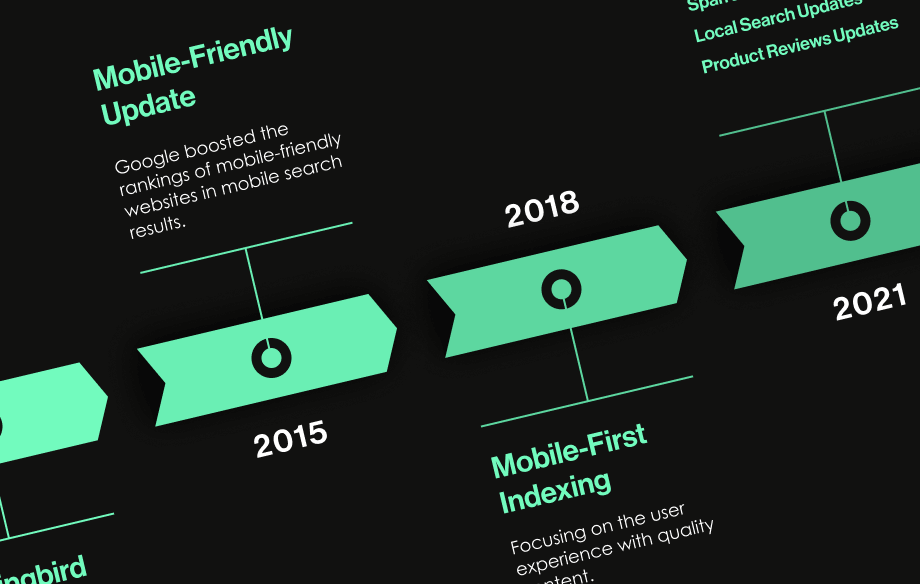Ah, behold the tumultuous battleground of the digital realm, where everyday new and established businesses embark on an epic quest for SEO dominance amidst fierce competition.
In this treacherous landscape, the key to unlocking victory lies in embracing the modern principles of positive user experience (UX) as a mighty weapon in your SEO campaign arsenal. Brace yourselves, for the very essence of UX holds the power to shape a website’s destiny, commanding its search engine rankings, summoning forth waves of engaged organic traffic, and determining the very pulse of its online existence.
Prepare to embark on a riveting journey as we uncover the all-too-often missed significance of user experience in your SEO strategy. We will uncover the hidden gems and search engine secrets that can propel your business to unprecedented organic heights.
Together, we shall ascend to the zenith of digital glory, where success and prosperity await those who master the relationship between SEO and UX. Let’s lock and load!
The Power of User Experience (UX)
User experience encompasses the overall satisfaction and impression that a digital audience has when interacting with a website or digital platform. By putting user experience at the forefront of your marketing strategies, businesses can enjoy a bountiful feast of benefits that offer a huge boost to their online presence and SEO campaign success.
Exceptional user experiences result in enhanced engagement and user satisfaction. A seamless and intuitive user experience encourages visitors to delve deeper into a website, leading to increased engagement and extended browsing sessions.
Engaged users are more likely to:
- Consume your website content
- Interact with your website features and actions
- Have a positive experience with your brand
- Convert into loyal customers
It’s critical to understanding the relationship user experience plays in improving a business’s SEO strategy and performance. Search engines, like Google, give websites that provide a positive user experience more leverage and trust in their search ranking algorithm. Making them more likely to rank higher in their search results, increasing their visibility to attract higher volumes of organic traffic. By prioritising your website’s user experience, your business can gain a competitive edge in the digital landscape.
Google’s Search Engine Algorithm Rewards Good User Experience
From its inception, the Google search engine has demonstrated its unwavering commitment to enhancing user experience throughout its continual development updates. As its algorithm evolved so did its importance on user-centric design thinking by prioritising the needs and preferences of its users. A harmonious union was forged between a positive website experience and Google’s own mission to deliver the highest quality search results.
This inseparable bond between user experience (UX) and SEO has changed the strategic landscape of marketing agencies, urging them to consider the importance of the user journey for delivering effective SEO strategies. Throughout the years, Google has introduced notable transformations to its search algorithm, refining the art of delivering relevant and valuable search results to its users.

Here are some of the most-notable user focused updates that Google has introduced to its search engine algorithm over the years.
-
Google Hummingbird (2013)
The Hummingbird update aimed to understand user intent and context behind searches, enabling users to ask more complex questions and receive relevant results. This update emphasised providing a sophisticated search results page that went beyond exact keyword matches.
-
Mobile-Friendly Update (2015)
With the rise of mobile usage, Google introduced this update to prioritise mobile-friendly websites in search rankings. It aimed to improve the mobile browsing experience for users by promoting the use of responsive led design principles. Their list of mobile design principles and guidelines was created for smaller screen sizes with an emphasis on touch and gestures.
-
Mobile-First Indexing (2018)
As mobile usage continued to surge, Google shook things up by announcing a monumental shift into mobile-first indexing. This meant that the mobile version of a website would take centre stage as the primary basis for ranking and indexing, ensuring a seamless experience for mobile users.
-
Page Experience Update (2021)
With the Page Experience Update, Google pushed the importance of user experience as a ranking factor. Core Web Vitals, including metrics like page loading speed, interactivity, and visual stability, became crucial factors in determining search rankings. Websites providing a better user experience were rewarded with higher visibility in search results.
-
The Helpful Content Update (2022)
The Helpful Content Update focused on ranking websites that provide valuable and informative content. Google refined its algorithm to identify and reward websites that offer practical and actionable information, helping users find relevant solutions to their queries.
These continuous developments to their search engine reflect Google’s efforts to put the user experience first and deliver more relevant and meaningful results. By understanding the role of a positive user experience, businesses can align their SEO strategies with Google’s evolving algorithm to find the most value and future-proof their marketing efforts.
The Connection Between SEO and User Experience (UX)
When optimising your website user experience for your SEO strategy, there are many UX scenarios and principles to consider. Let’s delve into a range of scenarios that demonstrate how a positive user experience can significantly impact your SEO.

-
User Personas
Understanding the pain points, motivations, and needs of your website users is paramount in developing a user-centred website. User personas should represent the different user archetypes you have targeted in your audience. Tailoring your website experience to the needs of your target personas can ensure that SEO is at the heart of your design. Resulting in a website that can appeal to both users and search engines.
-
Information Architecture
The structure of a website, much like its hidden skeleton, plays a crucial role in guiding users and search engines to relevant pages. A well-researched information architecture ensures that users’ expectations and content divisions are met, providing a seamless experience. Moreover, search engines like Google reward well-structured sites by indexing all the available content, leading to increased keyword opportunities and improved visibility in search results.
-
Intuitive Navigation Menus
A well-organised and intuitive website navigation is crucial for providing a positive user experience. Your website users should be able to find the information they need effortlessly, without getting lost or confused or running into ‘dead-end’ page. Clear menus, logical page hierarchy, and strategic placement of navigation elements can all contribute to an increased user-friendly browsing experience. Search engines also rely heavily on a website’s structure to understand your website’s content and determine its relevance for their results. It’s important to optimise your site’s navigation to ensure it aligns with both user expectations and search engine guidelines to:
• enhance user experience,
• improve search engine crawlability,
• and ultimately boost your website’s rankings. -
Mobile-Friendly Design
Smartphones have taken over the world of web traffic and browsing. It’s now become the go-to device for users surfing the web. This means that having a mobile-friendly website is no longer a must, it’s a necessity! Mobile devices now account for the highest portion of online traffic and failing to provide a seamless mobile experience could result in lost opportunities for your SEO strategy.
“The percentage of global web traffic on mobile phones has surged over the past decade. In February 2023, 60.67% of all web traffic came through mobile phones, with the average for 2023 so far coming in at 60.06%.”
As reported by Oberlo.
As we showed above search engines like Google recognises the importance of mobile usability and incorporated the mobile user experience as a ranking factor in its algorithm. It’s now vital to implement responsive design principles into your business website to accommodate various makes, models and screen sizes for touch interactions. When done successfully you can cater to the growing number of mobile users and improve your website’s visibility in search results.
-
Usability Testing
A business website that is easy to use for your target personas is key to the success of any marketing strategy. Identifying obstacles that hinder users from completing desired actions is essential. Websites with poor usability frustrate users, prompting them to quickly return to the search engine results page (SERP). This behaviour signals to Google that the content provided was unhelpful or failed to meet expectations. By conducting thorough usability testing and addressing any issues, you can deliver a positive experience that generates positive signals to Google, affirming the value and usability of your website.
-
Page Load Speed
In today’s fast-paced digital world, where the attention spans of your website users are constantly dwindling, a website’s loading speed has a significant impact on user experience. A slow-loading website frustrates users and increases the likelihood of them abandoning the site altogether. And this can have a direct effect on your website’s rank in search engines, like Google which places a fast-loading speed high-up in its ranking algorithm. There are lots of helpful resources on the web to audit your website and identify the most notable drops in performance. One of our favourite tools to use is Google’s own Page Speed Insights tool. which can audit your website for both Desktop and Mobile devices and provide you with a knowledge base of help to make any improvements.
-
Accessibility Review
As the web has evolved so has the necessity to provide equal access and inclusivity for everyone. Considering accessibility is crucial, as search engines, including Google, rely on website structure and elements to understand the content. By conducting an accessibility review, you can ensure that your website is inclusive of users with disabilities. Like those with visual impairments who rely on screen readers. This includes incorporating alt tags for images and implementing appropriate colour contrast. Creating an accessible website not only promotes inclusivity but also meets Google’s criteria for understanding your website’s structure and content.
In Conclusion
Once you understand that good user experience is the key to unlocking the full potential of your SEO strategy, your business can achieve higher search rankings, attract more organic traffic, and convert visitors into loyal customers.
Positive user experiences also contribute to higher customer satisfaction, fostering trust and loyalty in your brand and services. As we demonstrated above this is reflected in search engines like Google, which have consistently emphasised the importance of user experience in its algorithm updates. Once you understand the relationship between UX and SEO you can align your website towards search engine algorithms that reward user-centric principles.
Don’t let your website crumble in the shadows of mediocrity! Seize the moment and take charge of your campaign destiny. Contact Perth SEO Studio today, where we wield the expertise in exceptional user experience that can propel your SEO strategy to unprecedented heights. Get ready to soar above the competition and bask in the glory of SEO dominance!



